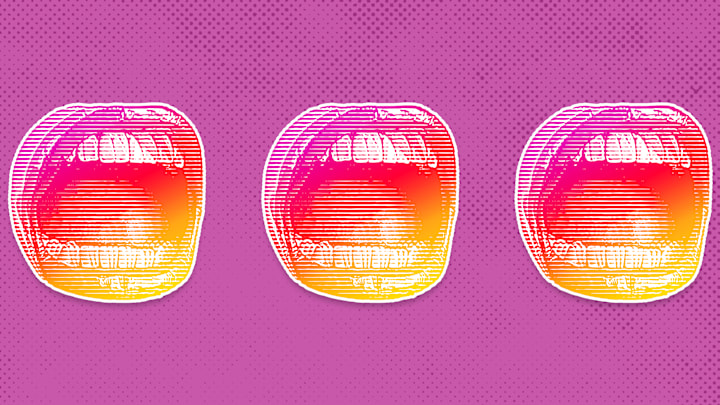You may have heard of the linguistic fad that has crept into U.S. speech and is undermining your job chances. Or maybe you know it as the “debilitating speaking disorder afflicting North American women” or the “verbal tic of doom.” It’s called vocal fry, and it’s the latest “uptalk” or “valleyspeak,” a.k.a. the “ditzy girl” speaking style that people love to hate.
Unlike uptalk, which is a rising intonation pattern, or valleyspeak, which covers a general grab bag of linguistic features (including vocabulary), vocal fry describes a specific sound quality caused by the movement of the vocal folds. In regular speaking mode, the vocal folds rapidly vibrate between a more open and more closed position as the air passes through. In vocal fry, the vocal folds are shortened and slack so they close together completely and pop back open, with a little jitter, as the air comes through. That popping, jittery effect gives it a characteristic sizzling or frying sound. (It’s unclear if that’s how fry actually got its name, but that’s the story you hear most often.)
Vocal fry, which has also been called creaky voice, laryngealization, glottal fry, glottal scrape, click, pulse register, and Strohbass (straw bass), has been discussed in musical and clinical literature since at least the middle of the 20th century. It is a technique (not necessarily encouraged) that lets a singer go to a lower pitch than they would otherwise be capable of. It shows up with some medical conditions affecting the voice box. It is also an important feature in some languages, like Zapotec Mayan, where fry can mark the distinction between two different vowels. These days, however, you mostly hear about it as a social phenomenon, as described (and decried) as “the way a Kardashian speaks” in this video by Faith Salie.
Certainly, a compilation like this makes vocal fry look like a new thing, but looks can be deceiving. As Mark Liberman showed at Language Log, evidence for its rise is only anecdotal, and it’s not hard to find examples of it going way back. People’s voices naturally drop in pitch at the end of phrases, and in many speakers, it will drop into the fry zone at that point.
The evidence that it’s a woman thing is also anecdotal. Plenty of men fall into vocal fry. For instance, Noam Chomsky has it pretty bad—and no one seems to be complaining that his creaky voice makes him sound ditzy.
In fact, as linguist Penny Eckert told NPR, “the biggest users of vocal fry traditionally have been men, and it still is; men in the UK, for instance. And it’s considered kind of a sign of hyper-masculinity.”
Whether or not vocal fry is actually on the rise, it is clear that people noticing fry, especially in young women, is on the rise. In a 2015 segment on This American Life, Ira Glass said “listeners have always complained about young women reporting on our show. They used to complain about reporters using the word like and about upspeak … But we don’t get many emails like that anymore. People who don’t like listening to young women on the radio have moved on to vocal fry.”
Glass talked to Eckert, who did a study asking people to rate how authoritative a radio reporter with vocal fry sounded. The response depended on the age of the rater. Those under 40 thought it sounded authoritative while those over 40 did not. Basically, as summed up by Glass, “if people are having a problem with these reporters on the radio, what it means is they’re old.”
A version of this story ran in 2015; it has been updated for 2023.
